MK107 MOD 2-M Upper .223 Wylde
The MK107 MOD 2-M Upper operates on the highly acclaimed PWS Long Stroke Piston System, renowned for its reliability and reduced fouling. The inclusion of a 3-setting Adjustable Gas System allows users to fine-tune gas flow, ensuring optimal performance in diverse shooting conditions as well as optimizing it for suppressor use. This innovative system not only enhances reliability but also provides adaptability to various ammunition types and environmental factors.
Highlighted Features
-
PWS Long Stroke Piston System: Renowned for reliability and reduced fouling, with adjustable gas settings for optimal performance.
-
Suppressor Optimized: Provides enhanced suppressor performance by minimizing back pressure, reducing gas blowback, and optimizing gas flow for a cleaner and more comfortable shooting experience.
-
.223 Wylde Chambering: Meticulously designed for outstanding accuracy and reliability, accommodating both .223 Remington and 5.56mm NATO.
-
PWS CQB Muzzle Device: Expertly mitigates recoil and muzzle rise for improved shooter control.
-
Innovative PicLok™ Handguard: Combining both Picatinny and MLOK into one for mounting accessories, balancing ergonomics and functionality.
-
Radian Raptor™ Ambidextrous Charging Handle: Ensures smooth operation for both left and right-handed shooters.
PWS MK107 MOD 2-M UPPER
PWS Long-Stroke Piston System
The MK107 MOD 2-M Upper operates on the highly acclaimed PWS Long Stroke Piston System, renowned for its reliability and reduced fouling. The inclusion of a 3-setting Adjustable Gas System allows users to fine-tune gas flow, ensuring optimal performance in diverse shooting conditions. This innovative system not only enhances reliability but also provides adaptability to various ammunition types and environmental factors.
Why Use the Long-Stroke Piston System?
Opting for a Primary Weapons Systems gas piston system over a traditional Direct Gas Impingement (DI) system on an AR-15 can be motivated by several advantages, particularly in terms of safety, cleanliness, and performance, especially when considering the use of a suppressor. Here are key reasons why you might want to choose a PWS gas piston system:
- Reduced Gas Blowback: In a piston-operated system, like the one offered by PWS, the gas is not directed back into the upper receiver, minimizing gas blowback towards the shooter's face. This design enhances the overall shooting experience, particularly for those who prioritize a cleaner and more comfortable shooting environment.
- Enhanced Reliability: The piston system typically provides enhanced reliability, especially in adverse conditions or when the rifle becomes dirty. Since the operating components are not exposed to the combustion gases to the same extent as in a DI system, there's less chance of fouling affecting the rifle's function. This can be a critical factor for users who require consistent performance in various environments.
- Cooler Operating Temperature: The piston system tends to keep the operating components cooler than a DI system, as the hot gases are vented away from the action. This can contribute to prolonged barrel and component life, reducing wear and potential heat-related issues during extended firing sessions.
- Cleaner Action: PWS gas piston systems contribute to a cleaner overall firearm because the fouling from burnt powder and carbon is not directed into the receiver. This can result in less maintenance and easier cleaning, which is particularly beneficial for users who prefer spending more time shooting than cleaning.
- Suppressor Use: When using a suppressor, a piston system is often preferred due to the reduced gas blowback and overall cleaner operation. Suppressors inherently increase backpressure, and a piston system helps mitigate this effect, providing a more pleasant shooting experience and minimizing the risk of gas and debris reaching the shooter's face.
- Adjustable Gas Systems: Many piston systems, including PWS, come with adjustable gas settings. This feature allows users to fine-tune the gas flow to accommodate different ammunition loads, suppressor usage, or adverse environmental conditions. This level of adaptability is valuable for shooters seeking optimal performance under various circumstances.
3-setting Adjustable Gas System
Allows the user to finely tune the weapon's gas flow in order to get maximum performance in diverse shooting conditions as well as optimizing for suppressor use.


Position 1
Position 1 is normal operation with standard and some military ammunition.


Position 2
Position 2 is for suppresser use with hotter loads such as military ammunition.


Position 3
Position 3 is for suppressed use when running standard ammunition.
PWS PicLok™
Introducing the MK107 MOD 2-M Upper, equipped with the revolutionary PWS PicLok™ 6.9” Handguard, showcasing our commitment to innovation and user customization. Crafted with dimensions of 1.7” width and 2.25” height, this handguard strikes an ideal balance between ergonomics and functionality, offering a comfortable and customizable grip for shooters.
The PicLok technology embedded in this handguard allows users to effortlessly mount Picatinny or MLOK accessories, enhancing the rifle's adaptability to individual preferences. We recognize the evolution of rifle rails with the advent of MLOK, and while our handguard embraces this modernization, we acknowledge that Picatinny rails still hold significant advantages. At PWS, we pride ourselves on providing a unique blend of innovation and tradition. While MLOK offers a streamlined and lightweight solution, the robustness and versatility of Picatinny rails are unmatched. Our handguard design combines the best of both worlds, ensuring our consumers benefit from the adaptability of MLOK alongside the time-tested advantages of Picatinny rails, setting PWS apart in offering a truly comprehensive and versatile rail system.
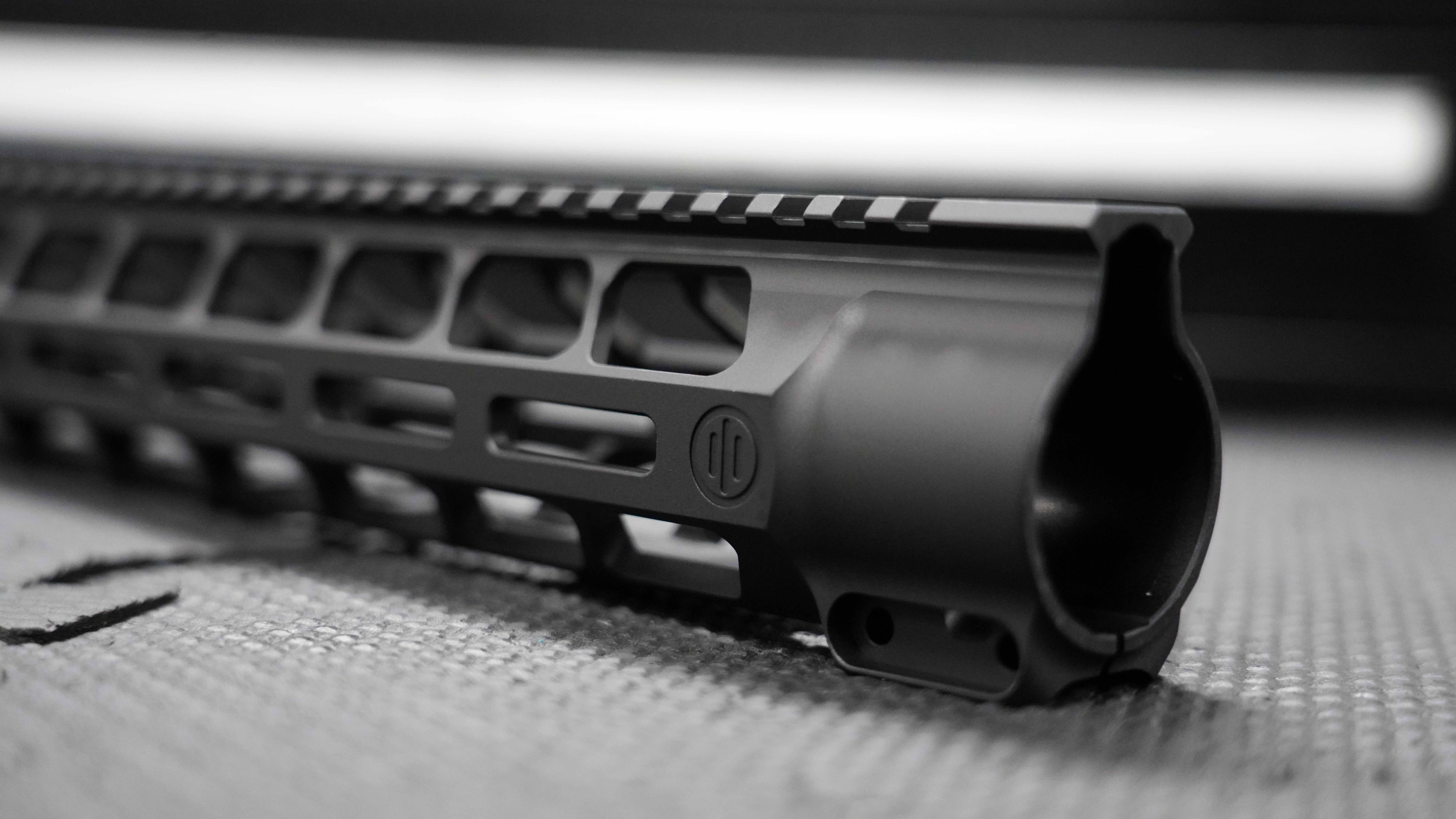

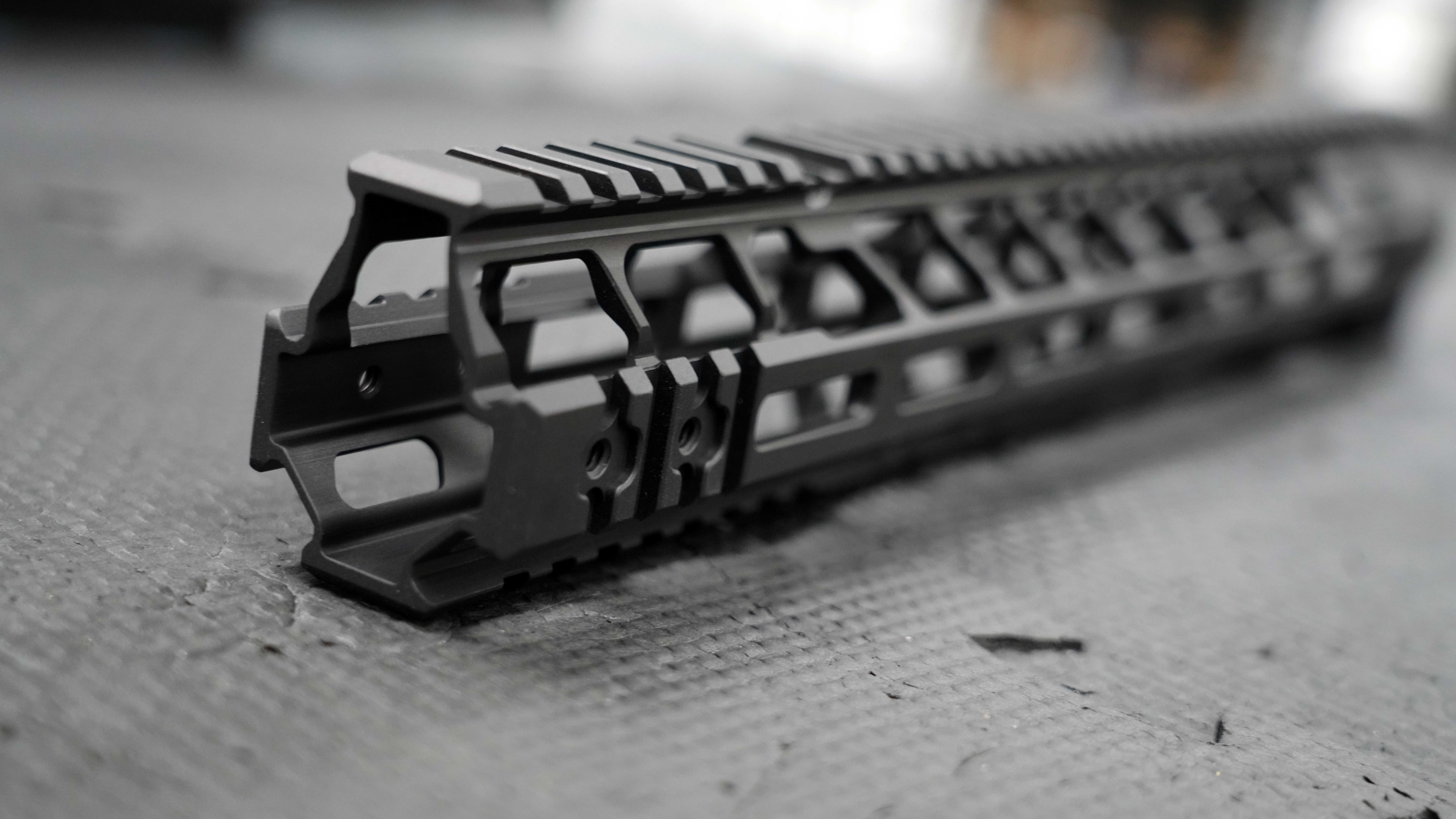

Chambered in 223 Wylde
Chambered in .223 Wylde, the MK107 MOD 2-M Upper is meticulously designed to offer outstanding accuracy and reliability. This caliber choice allows shooters to seamlessly use both .223 Remington and 5.56mm NATO ammunition, providing versatility without compromising on performance.
Why 223 Wylde?
Choosing a rifle chambered in .223 Wylde offers the best of both worlds for consumers seeking versatility and optimal performance. Developed by Bill Wylde, this chamber design seamlessly accommodates both .223 Remington and 5.56mm NATO ammunition, providing users with a broader range of options. The .223 Wylde chamber resembles the .223 Remington externally but incorporates a slightly longer throat to handle the higher pressures associated with 5.56mm NATO rounds. This design not only ensures compatibility with both cartridge types but also enhances accuracy by accommodating longer, heavier bullets commonly used for precision shooting. In essence, opting for a rifle with a .223 Wylde chamber means enjoying the flexibility to use different types of ammunition without compromising on accuracy, making it an ideal choice for shooters looking for a versatile and high-performing firearm.


The MK107 Barrel
The use of 41V50 steel in the construction of barrels, such as the 7.75" barrel featured in this rifle, highlights PWS's commitment to providing top-notch performance. 41V50 is a high-quality, chromium-molybdenum-vanadium alloy steel known for its exceptional strength, toughness, and resistance to wear and heat. Our choice of this premium steel demonstrates their dedication to producing barrels that can withstand rigorous use while maintaining accuracy.
By selecting 41V50 steel, we ensure that our barrels offer a harmonious balance between durability and maneuverability. This steel's robust nature contributes to the barrel's longevity, making it well-suited for various shooting scenarios. Whether engaged in tactical operations or recreational shooting, users can rely on the durability of the 41V50 steel to withstand the demands of their chosen activities.
It's worth noting that our commitment to quality extends beyond material selection. The fact that all barrels are manufactured in-house speaks to their meticulous control over the production process. This level of oversight allows us to maintain stringent quality standards, ensuring that each barrel meets our rigid specifications for accuracy, reliability, and overall performance. Ultimately, the combination of 41V50 steel and in-house manufacturing reflects our dedication to providing shooters with barrels that deliver exceptional performance and durability, making them a trusted choice for discerning firearm enthusiasts.
Understanding Twist Rate
Twist rate refers to the rate of rotation a barrel imparts to a projectile as it travels through. It's expressed as a ratio, indicating how many inches the bullet must travel to complete one full rotation. For example, a 1:8 twist rate means the bullet completes one full rotation every 8 inches of barrel travel. Twist rate plays a crucial role in stabilizing the projectile, ensuring it flies accurately and efficiently.
The primary function of the twist rate is to stabilize the bullet in flight. Stability is achieved by preventing the bullet from tumbling or veering off course. Different bullet weights and lengths perform optimally with specific twist rates. Too slow of a twist can result in insufficient stabilization, leading to accuracy issues, while too fast of a twist may overstabilize lighter bullets, impacting their performance.
The 1/8 Twist Rate
The 1/8 twist rate is often considered one of the best compromises for a 16-inch AR-15 barrel, providing versatility across a range of bullet weights. This twist rate strikes a balance between stabilizing lighter projectiles, like those commonly found in .223 Remington, and effectively stabilizing heavier, higher ballistic coefficient bullets used in 5.56mm NATO ammunition.
Key Advantages of 1/8 Twist
- Versatility: The 1/8 twist accommodates a broad spectrum of bullet weights, making it a versatile choice for various shooting applications.
- Accuracy Across Bullet Types: Strikes a balance, providing sufficient stabilization for both lighter and heavier bullets, contributing to overall accuracy.
- Optimal for Modern Ammunition: Matches well with the performance characteristics of contemporary .223 Remington and 5.56mm NATO ammunition, offering reliable accuracy.
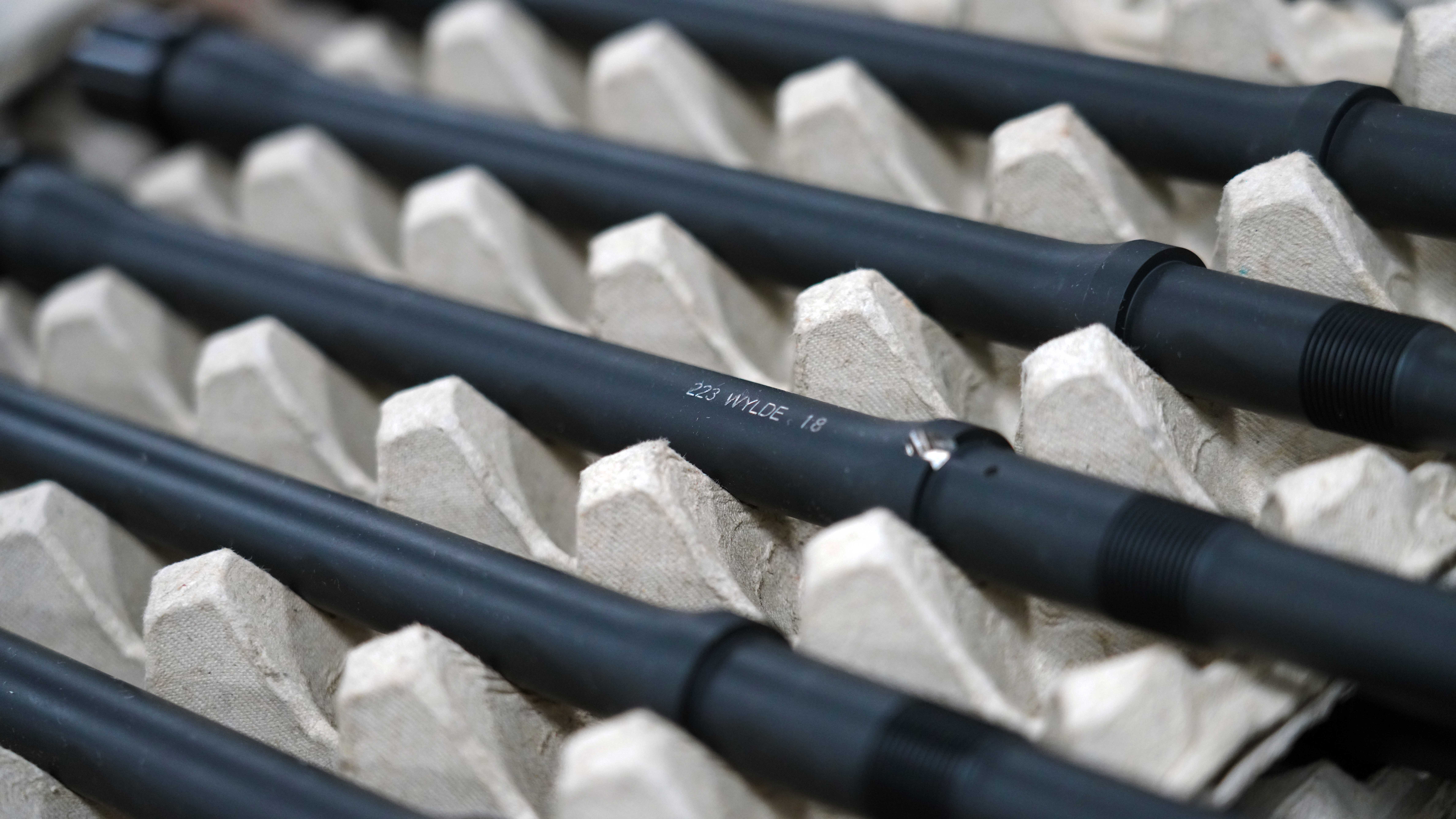

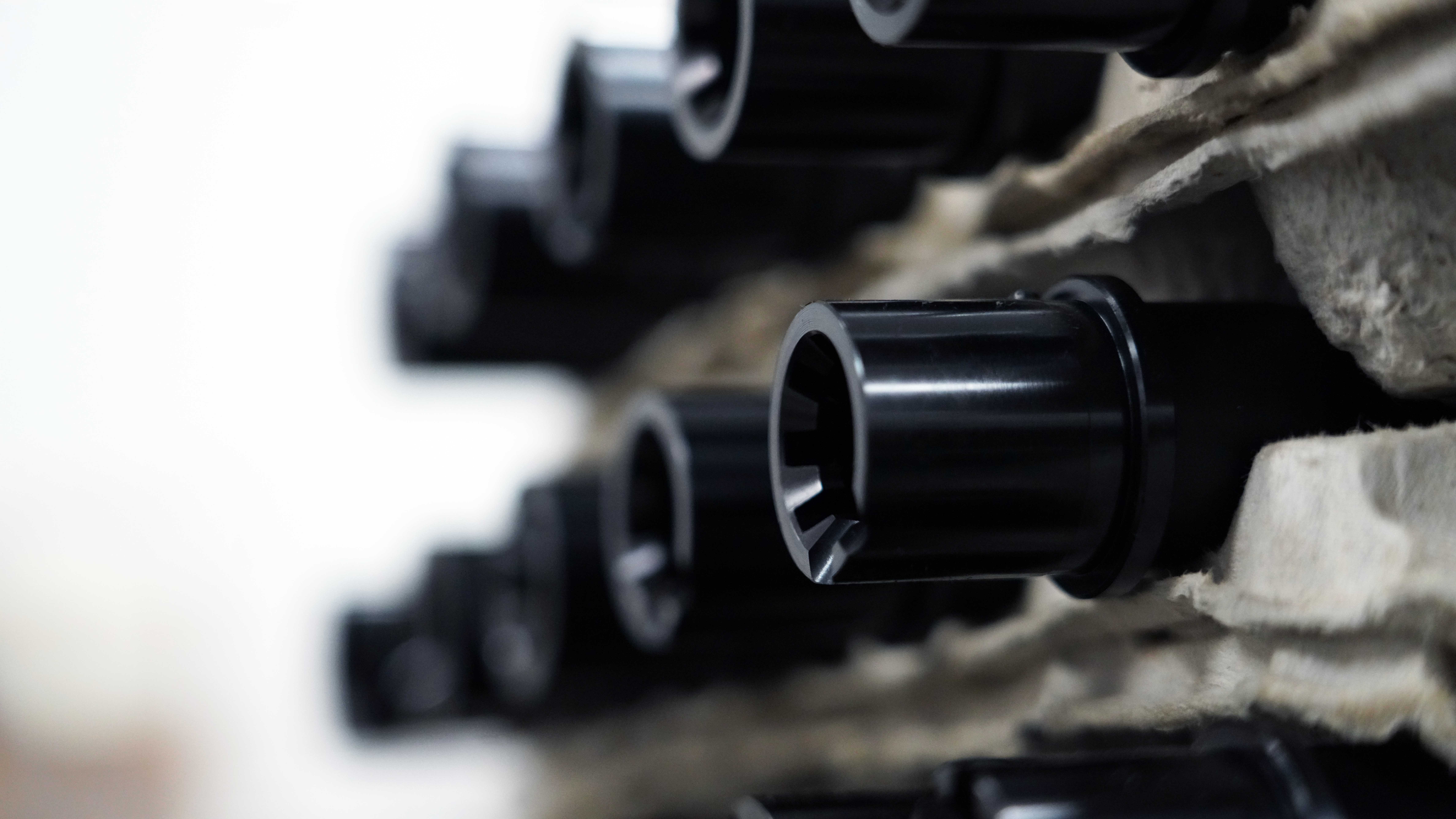

PWS CQB Compensator
Elevate your shooting experience with the dual-functional PWS CQB Compensator, designed for both recoil reduction and flash suppression. This top-tier compensator redirects sound forward, making it ideal for close-quarters combat situations, such as law enforcement and military units operating indoors and at short ranges. Gain popularity for use on short-barreled rifles, this compensator excels at mitigating sound and blast while improving overall weapon control. The patented design features unique port designs that effectively channel flash away from optics and the line of sight, ensuring a clear view and reducing overpressure. Expertly mounted for optimal performance, the CQB Compensator is a key component in the rifle's overall recoil management system, facilitating quick follow-up shots and providing improved shooter control. Opting for the PWS CQB Compensator delivers the best of both worlds—enhanced recoil management and effective flash suppression—making it a preferred choice among discerning AR15 enthusiasts.
Which muzzle device is the best for you?
Compensator: A compensator is designed to mitigate recoil and muzzle rise, enhancing overall shooter control. It achieves this by directing gases in specific directions to counteract the natural upward movement of the firearm during firing. While compensators can have secondary functions, such as flash suppression, their primary goal is recoil management. The PWS FSC 556 compensator, for example, excels in reducing recoil and features unique port designs to keep flash away from optics and the line of sight.
Flash Hider: A flash hider is primarily designed to minimize the visible muzzle flash that occurs during firing. It disperses the burning gases produced by the ignited gunpowder, reducing the intensity of the flash. Flash hiders are valuable for maintaining shooter visibility in low-light conditions and for preventing temporary visual impairment that can occur with larger-caliber firearms. However, they don't provide significant recoil reduction.
Muzzle Brake: A muzzle brake, like a compensator, is focused on recoil reduction and muzzle rise control. It achieves this by redirecting gases to counteract the firearm's natural movement during firing. Muzzle brakes are effective in reducing felt recoil but may produce more noticeable side blast and increased noise compared to compensators. They typically do not offer flash suppression as a primary feature.
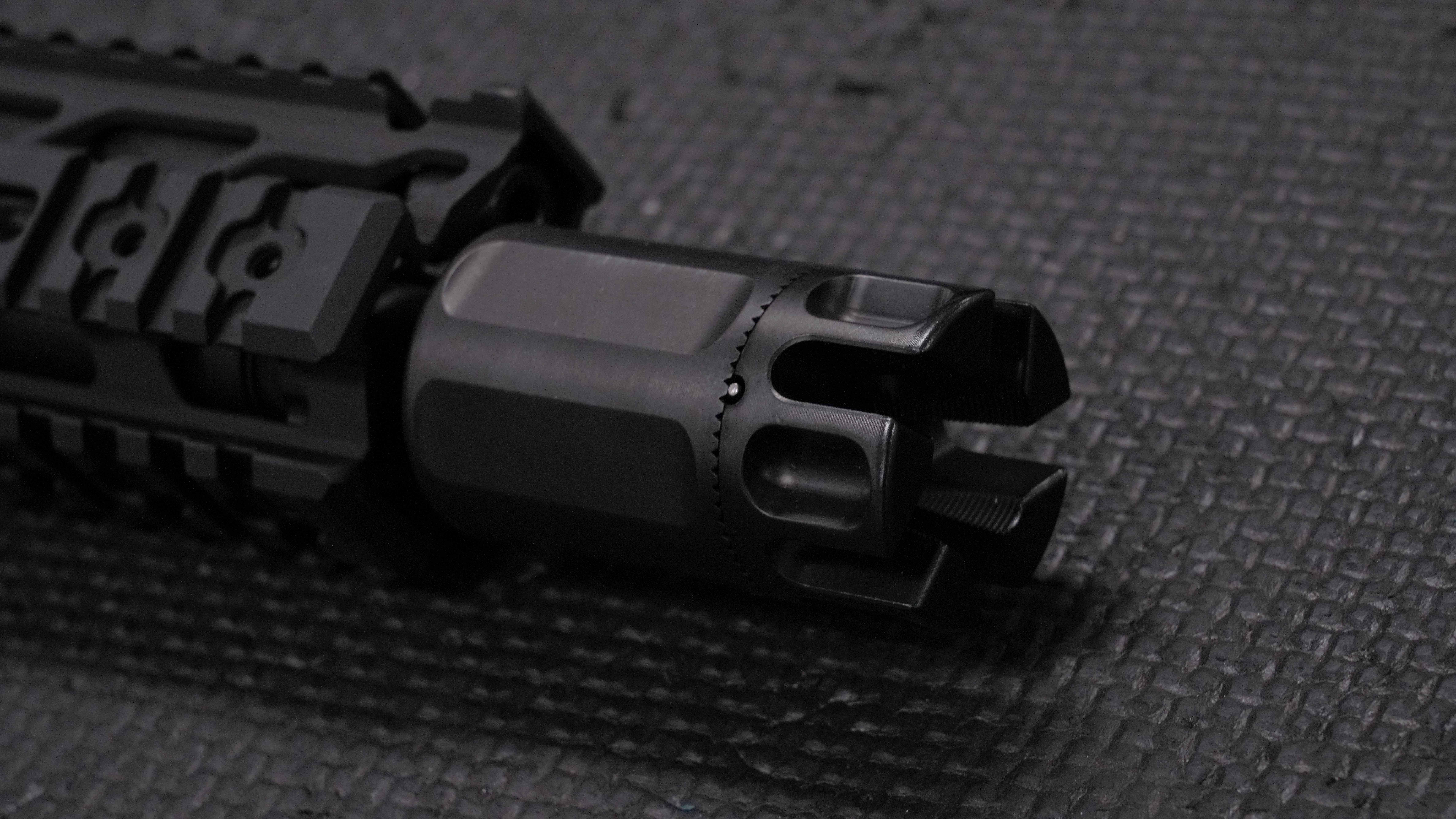

What Are Other's Saying About PWS?
| Serialized Item | No |
|---|





